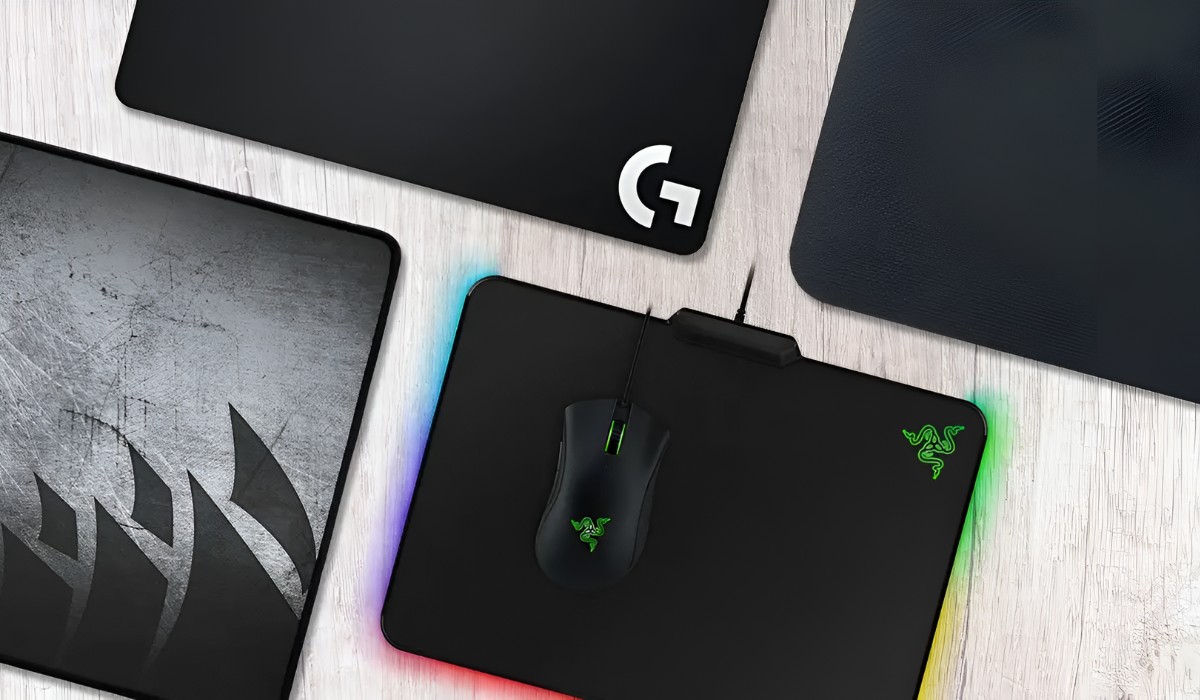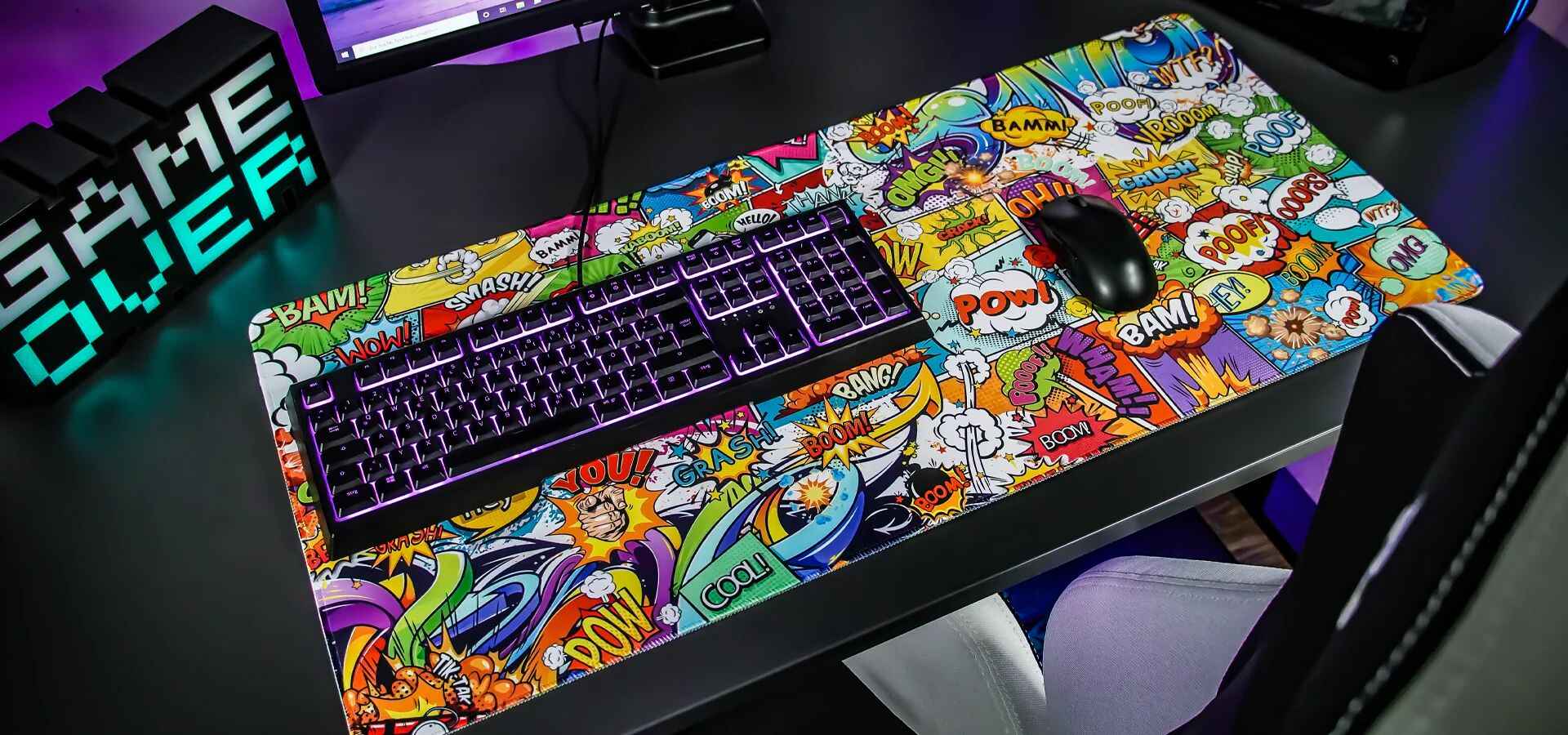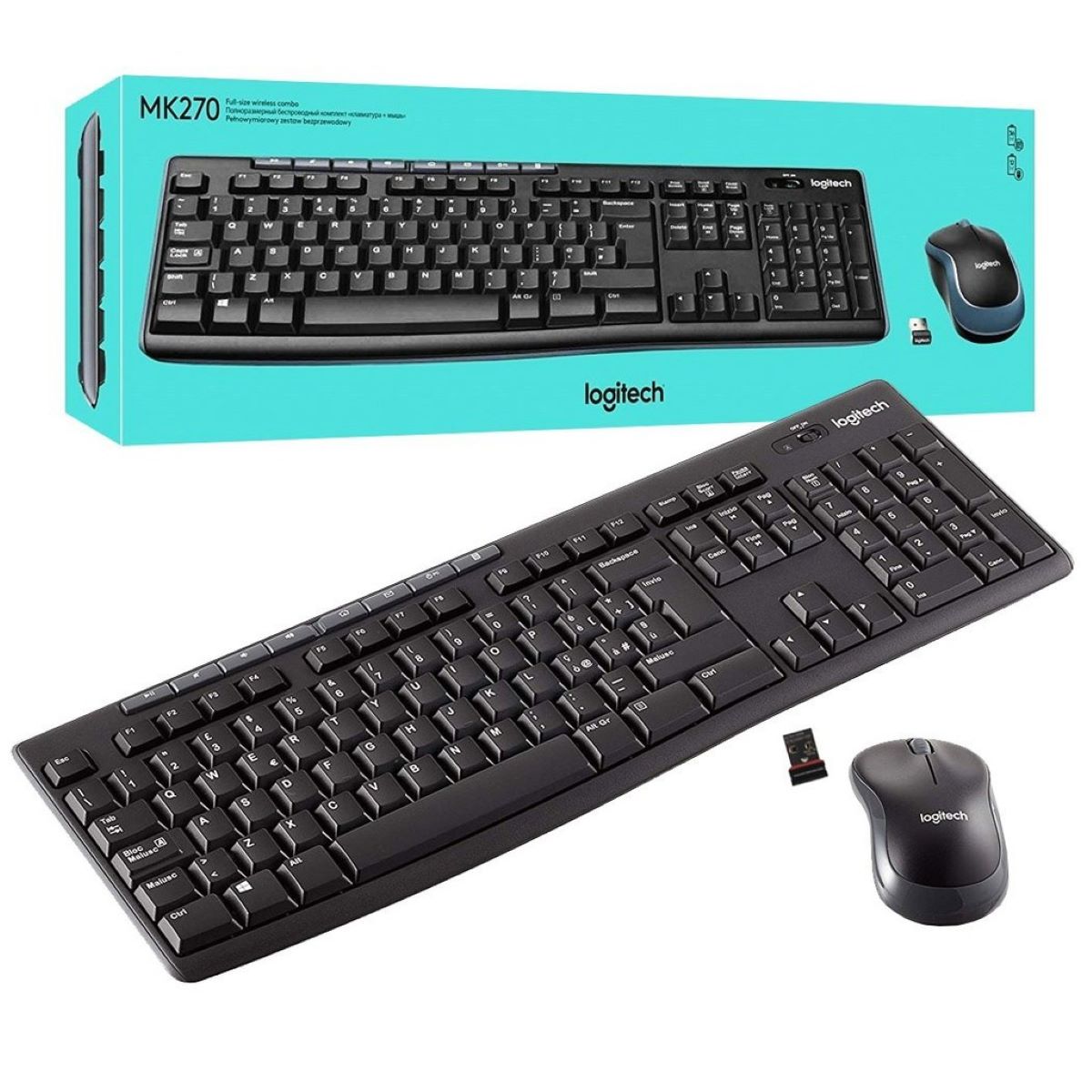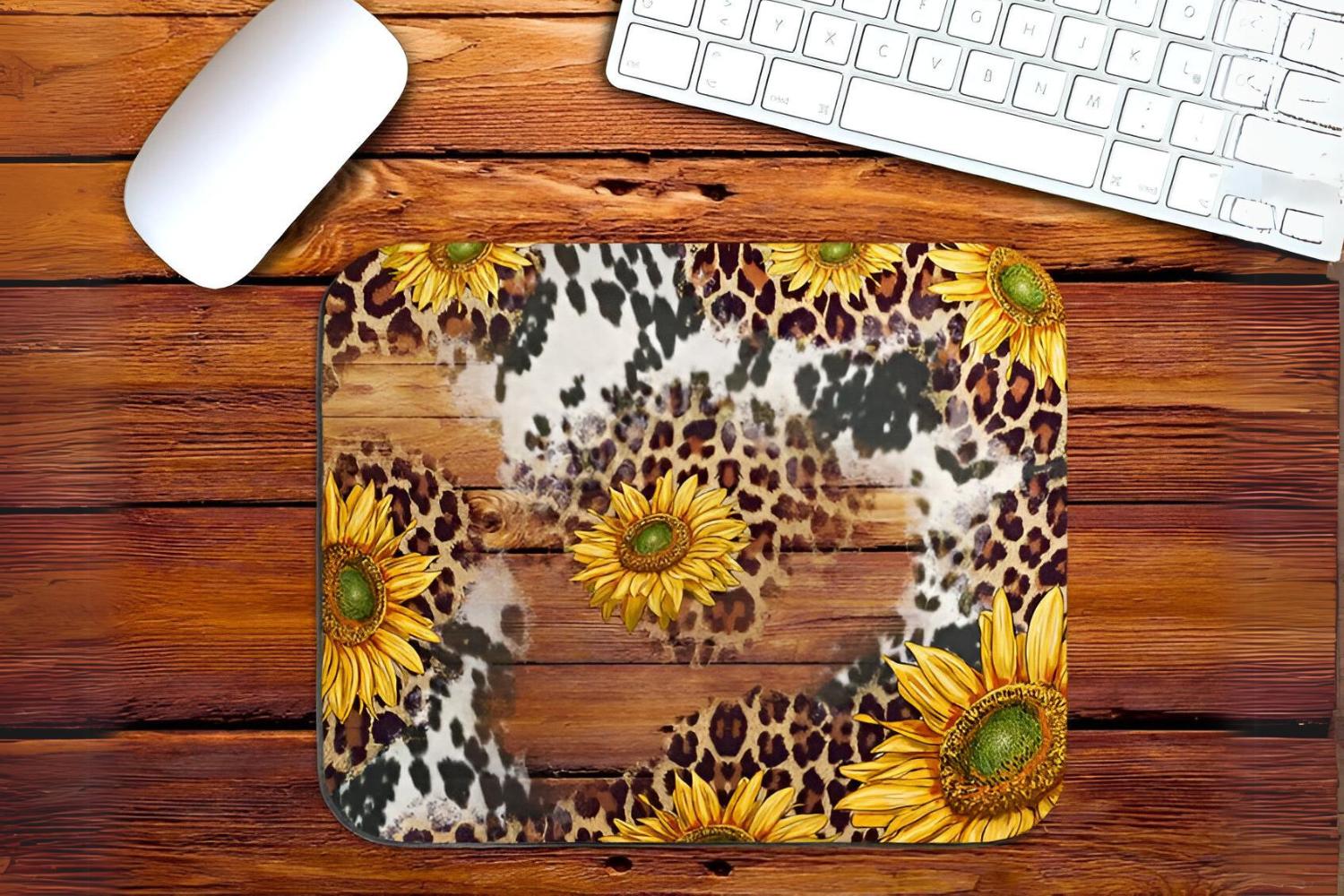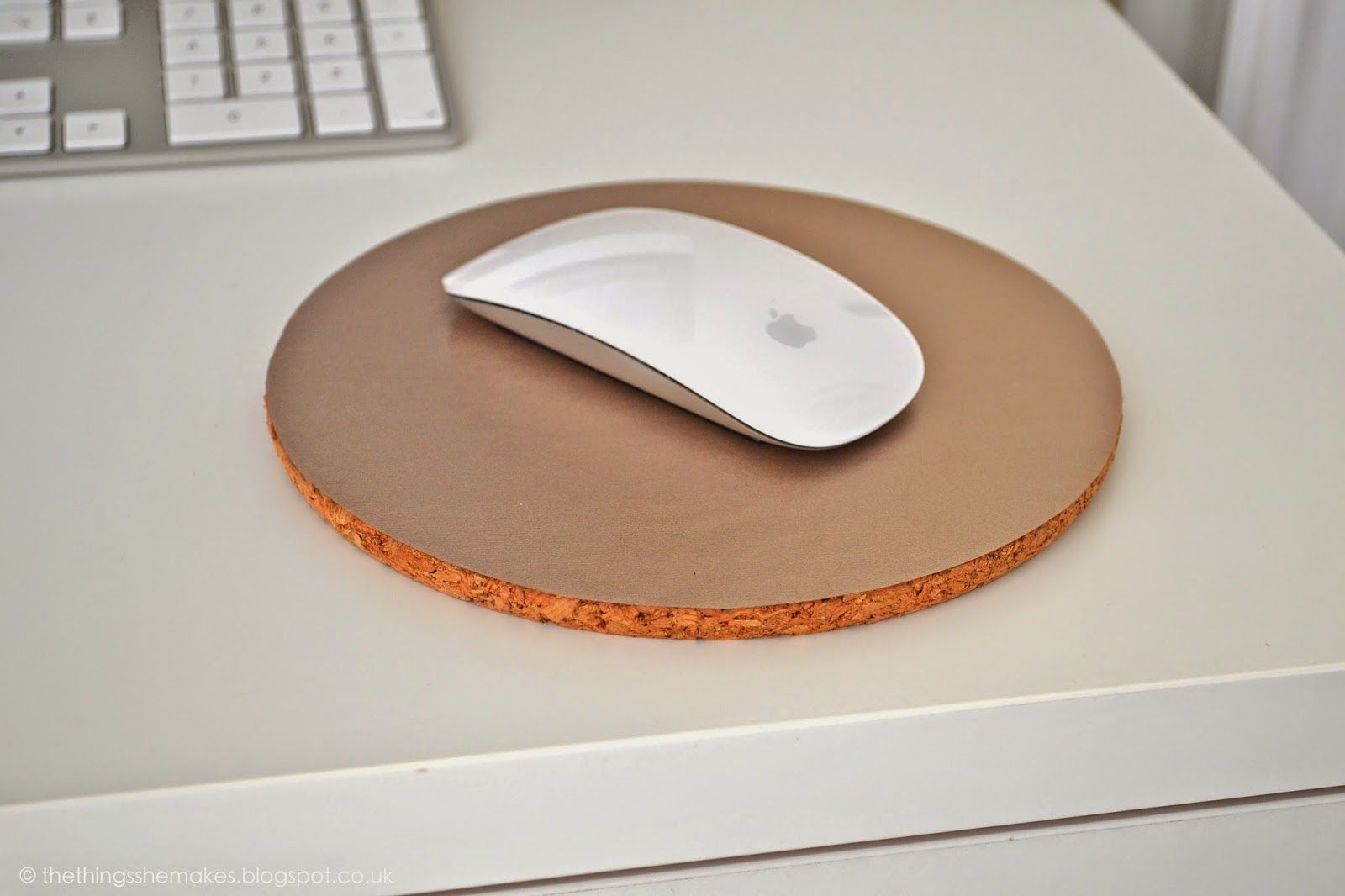Introduction
Introduction
When it comes to optimizing your computer setup, the humble mouse pad often takes a back seat to flashier peripherals. However, choosing the right mouse pad can significantly impact your computing experience. With a plethora of options available, from hard surfaces to gel-filled pads, finding the best one for your needs can be a daunting task. In this article, we will explore the various types of mouse pads and their unique benefits, helping you make an informed decision for your workspace.
A mouse pad, also known as a mouse mat, provides a smooth and consistent surface for your mouse to glide upon. It not only protects your desk from scratches but also enhances the precision and responsiveness of your mouse movements. Whether you are a casual computer user, a professional gamer, or someone who spends long hours at the computer, the right mouse pad can make a noticeable difference in comfort and performance.
As we delve into the world of mouse pads, we will discuss the characteristics and advantages of hard surface, soft surface, gel-filled, wireless charging, and ergonomic mouse pads. Each type offers unique features tailored to specific preferences and usage scenarios. By understanding the distinct qualities of these mouse pads, you can choose the one that best suits your needs, whether it's for gaming, design work, or everyday computing tasks.
So, let's embark on this exploration of mouse pads, uncovering the diverse options available and shedding light on the qualities that make each type stand out. Whether you're seeking precision, comfort, or advanced functionality, there's a mouse pad out there that's perfectly suited to elevate your computing experience. Let's dive in and discover the best kind of mouse pad for you.
Hard Surface Mouse Pads
Hard surface mouse pads are designed to provide minimal resistance, allowing the mouse to glide effortlessly for swift and precise movements. These pads are typically constructed from materials such as plastic, aluminum, or composite materials, offering a durable and low-friction surface for enhanced cursor control. The hard surface ensures that the mouse sensor receives accurate input, making these mouse pads a popular choice among gamers and graphic designers who require precise tracking and swift maneuverability.
One of the key advantages of hard surface mouse pads is their resistance to wear and tear. Unlike traditional cloth pads, hard surface pads are less prone to fraying or accumulating debris, ensuring a consistent glide over time. This durability makes them an excellent choice for users who demand reliability and longevity from their peripherals.
Additionally, hard surface mouse pads are easy to clean, as they do not absorb liquid or stains. This feature makes maintenance hassle-free, allowing users to maintain a clean and professional workspace without the need for frequent replacements.
Another notable benefit of hard surface mouse pads is their compatibility with high-DPI (dots per inch) mice. These pads facilitate precise tracking at varying sensitivity levels, making them ideal for users who require fine cursor control in tasks such as photo editing, 3D modeling, and competitive gaming.
Furthermore, hard surface mouse pads often feature non-slip backing to prevent unwanted movement during intense gaming sessions or fast-paced work environments. This stability ensures that the pad stays in place, providing a reliable foundation for consistent mouse movements.
While hard surface mouse pads excel in precision and durability, some users may find them less forgiving on the wrist during prolonged use. The rigid surface may not offer the same level of cushioning as soft surface or gel-filled pads, potentially leading to discomfort for individuals who prioritize ergonomic support.
In summary, hard surface mouse pads are favored for their durability, easy maintenance, and compatibility with high-precision mice. Their low-friction surface and robust construction make them an excellent choice for users who prioritize precise tracking and swift cursor movements in their computing endeavors.
Soft Surface Mouse Pads
Soft surface mouse pads, also known as cloth mouse pads, are revered for their comfort and versatility. Constructed with a fabric top layer and a non-slip rubber or foam base, these pads offer a cushioned surface that is gentle on the wrists and provides a consistent glide for the mouse. The soft texture of these pads ensures a smooth and comfortable user experience, making them a popular choice for office environments, casual computer users, and individuals seeking ergonomic support.
One of the primary advantages of soft surface mouse pads is their ability to provide a comfortable resting surface for the wrist during extended computer use. The cushioned material reduces strain on the wrist and forearm, promoting a more ergonomic and comfortable computing experience, particularly for individuals who spend long hours at the computer.
Furthermore, soft surface mouse pads are known for their ability to absorb minor irregularities on the desk surface, providing a level and consistent platform for mouse movements. This feature is beneficial for users working on uneven or textured desks, as the pad ensures a uniform and predictable mouse glide regardless of the underlying surface.
Soft surface mouse pads are also highly customizable, often featuring a variety of designs, patterns, and sizes to cater to individual preferences and aesthetic tastes. This versatility allows users to personalize their workspace and express their style through their choice of mouse pad, adding a touch of personality to their computing environment.
Moreover, the fabric top layer of soft surface mouse pads is conducive to precise tracking, making them suitable for tasks that require accurate cursor control, such as graphic design and general office work. The consistent and uniform surface ensures that the mouse sensor receives reliable input, facilitating smooth and precise movements.
While soft surface mouse pads offer exceptional comfort and versatility, they may require more frequent cleaning and maintenance compared to hard surface pads. The fabric top layer is susceptible to staining and wear over time, necessitating periodic cleaning to maintain a fresh and hygienic workspace.
In summary, soft surface mouse pads are prized for their comfort, ergonomic support, and customizable design options. Their cushioned surface, consistent glide, and ability to absorb irregularities make them an excellent choice for users seeking a comfortable and personalized computing experience.
Gel-Filled Mouse Pads
Gel-filled mouse pads, also known as wrist rest mouse pads, are designed to provide ergonomic support and alleviate strain on the wrist and forearm during prolonged computer use. These pads feature a cushioned, gel-filled wrist rest that runs along the bottom edge, offering a soft and supportive surface for the wrist to rest upon while using the mouse. The gel filling conforms to the shape of the wrist, providing a comfortable and customized support experience.
One of the primary advantages of gel-filled mouse pads is their ability to reduce wrist fatigue and discomfort associated with extended mouse usage. The cushioned gel wrist rest promotes a neutral wrist position, helping to prevent strain and discomfort during long computing sessions. This feature is particularly beneficial for individuals who suffer from wrist pain or carpal tunnel syndrome, as the gel filling provides gentle support and alleviates pressure on the wrist.
Furthermore, the gel-filled wrist rest enhances comfort and promotes proper ergonomics, aligning the wrist at a neutral angle to reduce the risk of repetitive strain injuries. This ergonomic design feature makes gel-filled mouse pads an ideal choice for users who prioritize comfort and seek to maintain healthy computing habits.
Gel-filled mouse pads often feature a non-slip base to prevent unwanted movement during use, ensuring that the pad remains stable on the desk surface. This stability is essential for maintaining a consistent and reliable support surface for the wrist, especially during intense gaming sessions or high-precision tasks that require steady mouse control.
Moreover, gel-filled mouse pads are available in various shapes and sizes, catering to different preferences and workspace requirements. Some designs incorporate cooling properties to dissipate heat from the wrist, providing a refreshing and comfortable experience during prolonged use.
While gel-filled mouse pads offer exceptional wrist support and comfort, they may not provide the same level of glide precision as hard surface or soft surface pads. The gel-filled wrist rest may introduce slight resistance to mouse movements, which can impact the speed and responsiveness of cursor control for users who prioritize swift and precise mouse navigation.
In summary, gel-filled mouse pads are valued for their ergonomic wrist support, comfort, and stability. Their cushioned gel filling and wrist rest design make them an excellent choice for users seeking to alleviate wrist strain and maintain proper ergonomics during extended computer use.
Wireless Charging Mouse Pads
Wireless charging mouse pads, also known as charging mats, combine the functionality of a mouse pad with the convenience of wireless charging for compatible devices. These innovative pads integrate a wireless charging coil into the surface, allowing users to power up their Qi-enabled smartphones, wireless earbuds, or other compatible devices simply by placing them on the designated charging area of the pad. This dual-purpose functionality streamlines the workspace by eliminating the need for separate charging cables and provides a seamless charging solution for modern devices.
One of the primary advantages of wireless charging mouse pads is their ability to declutter the workspace and simplify device charging. By integrating wireless charging capability, these pads offer a convenient and efficient way to power up compatible devices without the hassle of managing multiple cables and adapters. This feature is particularly beneficial for users who value a clean and organized workspace.
Furthermore, wireless charging mouse pads often feature a non-slip surface to secure both the mouse and the charging device in place during use. This stability ensures that the mouse pad remains functional and the charging device stays in position, providing a reliable and uninterrupted user experience.
Wireless charging mouse pads are available in a range of designs and materials, catering to diverse preferences and aesthetic tastes. Whether it’s a sleek and minimalist pad for professional environments or a vibrant and colorful option for personal use, these pads offer a blend of practicality and style to complement various workspaces.
Moreover, the integration of wireless charging technology into the mouse pad adds a layer of convenience for users who rely on Qi-enabled devices. The pad serves as a multifunctional hub, offering a designated area for precise mouse control while simultaneously providing a wireless charging spot for compatible devices, creating a streamlined and efficient workstation.
While wireless charging mouse pads offer the convenience of wireless power delivery, it’s important to note that they may not provide the same level of customization and design options as traditional mouse pads. The integration of charging technology may limit the variety of materials and surface textures available, potentially impacting the user’s ability to personalize their mouse pad to suit their preferences.
In summary, wireless charging mouse pads offer a seamless combination of mouse pad functionality and wireless charging capability, providing a clutter-free and efficient solution for powering up compatible devices while maintaining a smooth and precise surface for mouse navigation.
Ergonomic Mouse Pads
Ergonomic mouse pads are specifically designed to promote proper wrist and hand positioning, reduce strain, and enhance comfort during extended computer use. These pads feature a contoured and cushioned design that supports the natural alignment of the wrist and forearm, providing a comfortable and supportive surface for mouse navigation. The ergonomic features of these pads aim to prevent repetitive strain injuries and promote healthy computing habits, making them a valuable addition to any workspace.
One of the primary advantages of ergonomic mouse pads is their ability to alleviate wrist and hand discomfort associated with prolonged mouse usage. The contoured design and cushioned support provide a comfortable resting surface for the wrist, reducing pressure and promoting a neutral wrist position, which can help prevent conditions such as carpal tunnel syndrome and wrist fatigue.
Furthermore, ergonomic mouse pads often incorporate innovative materials such as memory foam or gel to provide a supportive and customized experience. These materials conform to the shape of the wrist, offering personalized comfort and reducing strain on pressure points, making them an ideal choice for users who prioritize ergonomic support.
Ergonomic mouse pads may also feature integrated wrist rests or raised platforms to support the wrist and maintain proper hand alignment while using the mouse. This design element helps reduce the strain on the wrist and forearm, promoting a more natural and relaxed posture during computer tasks.
Moreover, some ergonomic mouse pads incorporate additional features such as built-in wrist support, adjustable angles, or cooling properties to enhance the user’s comfort and promote healthy computing habits. These features cater to individuals who seek a comprehensive solution for wrist and hand support during computer use.
While ergonomic mouse pads offer exceptional wrist and hand support, it’s important to note that their contoured design and raised platforms may not be suitable for all users. Individuals with specific ergonomic requirements or those accustomed to flat mouse pads may find the contoured design less comfortable or adaptable to their preferred hand positioning.
In summary, ergonomic mouse pads are valued for their ability to promote proper wrist alignment, reduce strain, and enhance comfort during extended computer use. Their contoured and cushioned design, combined with innovative materials and additional features, make them an excellent choice for users seeking to maintain healthy computing habits and alleviate wrist discomfort.
Conclusion
Choosing the best mouse pad for your needs involves considering a variety of factors, including the intended usage, ergonomic requirements, and personal preferences. Each type of mouse pad offers distinct advantages tailored to different user scenarios, providing a diverse range of options to enhance comfort, precision, and functionality in your computing environment.
Hard surface mouse pads excel in providing minimal resistance and precise tracking, making them an ideal choice for gamers and graphic designers who prioritize swift and accurate mouse movements. Their durable construction and easy maintenance further contribute to their appeal for users seeking reliability and longevity from their peripherals.
Soft surface mouse pads offer exceptional comfort, ergonomic support, and customizable design options, making them a popular choice for office environments and individuals seeking a cushioned and versatile mouse pad. Their ability to absorb irregularities on the desk surface ensures a consistent and comfortable user experience, while their fabric top layer facilitates precise tracking for various computing tasks.
Gel-filled mouse pads prioritize ergonomic wrist support and comfort, alleviating strain on the wrist and forearm during prolonged computer use. Their cushioned gel filling and stability features make them an excellent choice for users seeking to maintain proper ergonomics and reduce wrist fatigue, particularly for individuals with specific wrist support needs.
Wireless charging mouse pads provide a seamless combination of mouse pad functionality and wireless charging capability, offering a clutter-free and efficient solution for powering up compatible devices while maintaining a smooth and precise surface for mouse navigation. Their integration of wireless charging technology streamlines the workspace and provides a convenient charging spot for modern devices.
Ergonomic mouse pads are designed to promote proper wrist and hand positioning, reduce strain, and enhance comfort during extended computer use. Their contoured and cushioned design, combined with innovative materials and additional features, make them an excellent choice for users seeking to maintain healthy computing habits and alleviate wrist discomfort.
Ultimately, the best mouse pad for you depends on your individual preferences, ergonomic needs, and intended usage. By understanding the unique characteristics and benefits of each type of mouse pad, you can make an informed decision to elevate your computing experience and create a workspace that aligns with your comfort and performance requirements.







